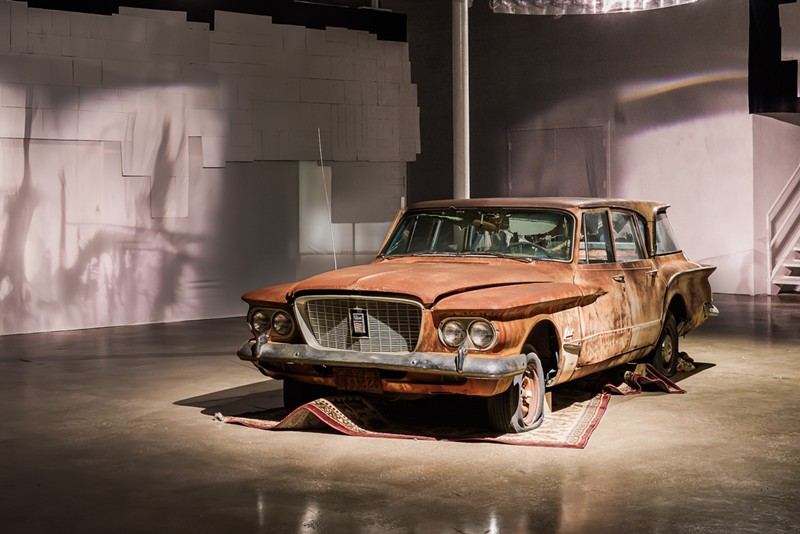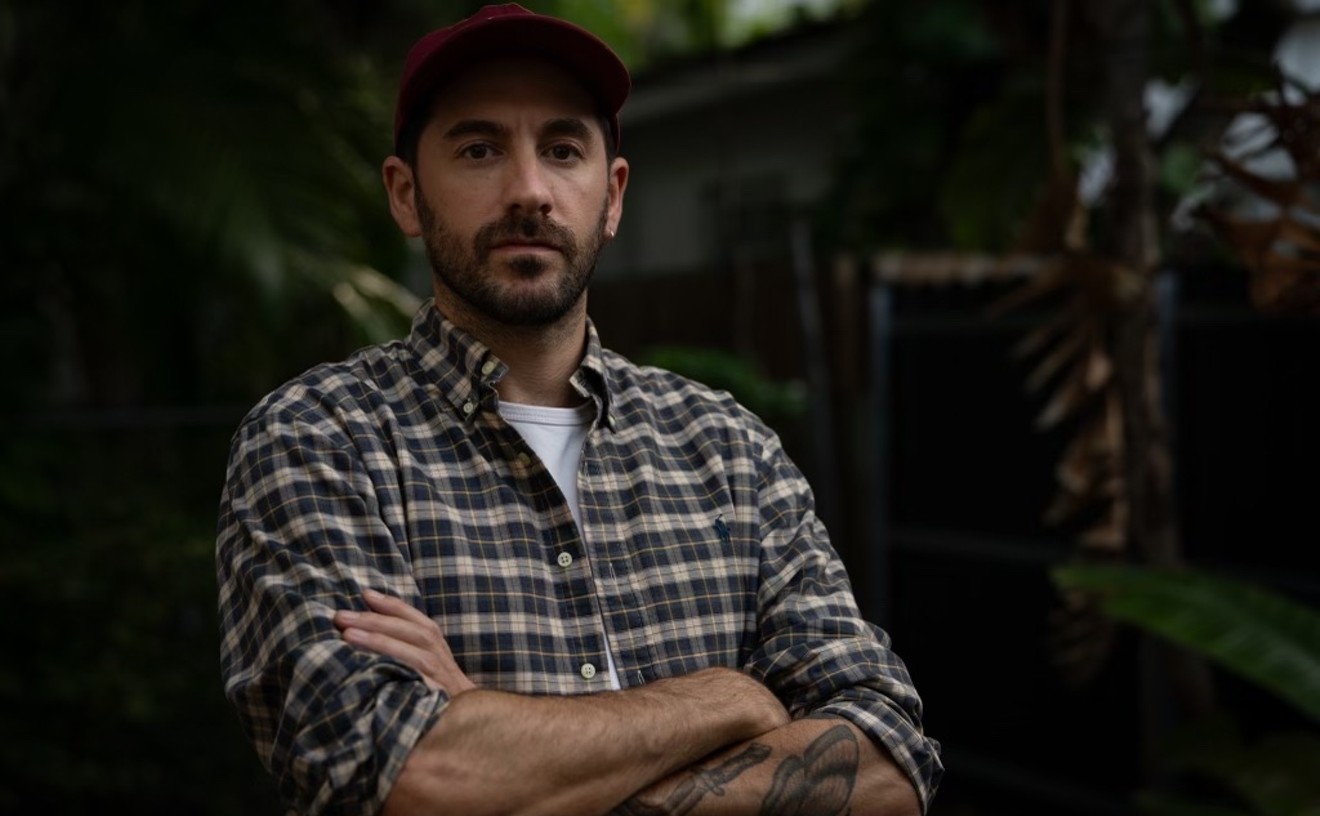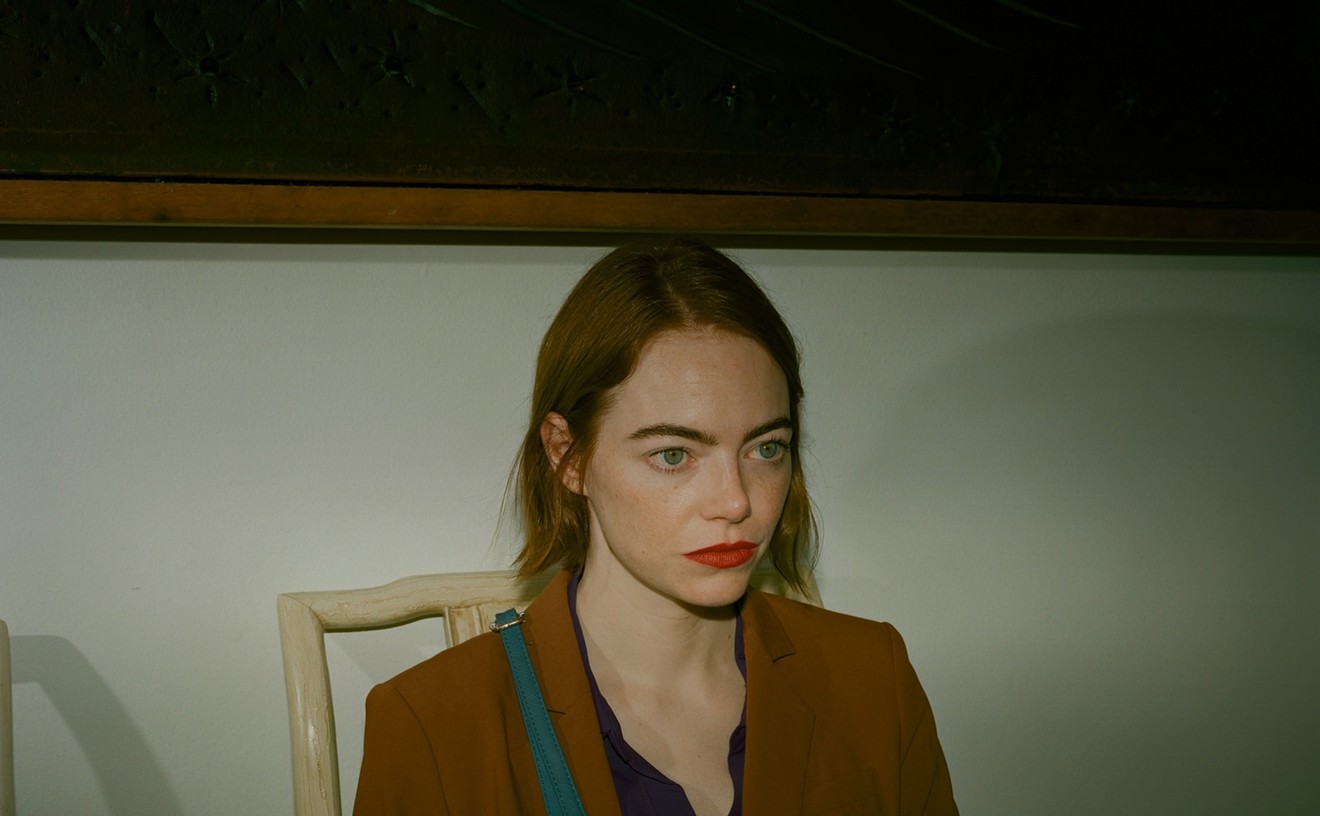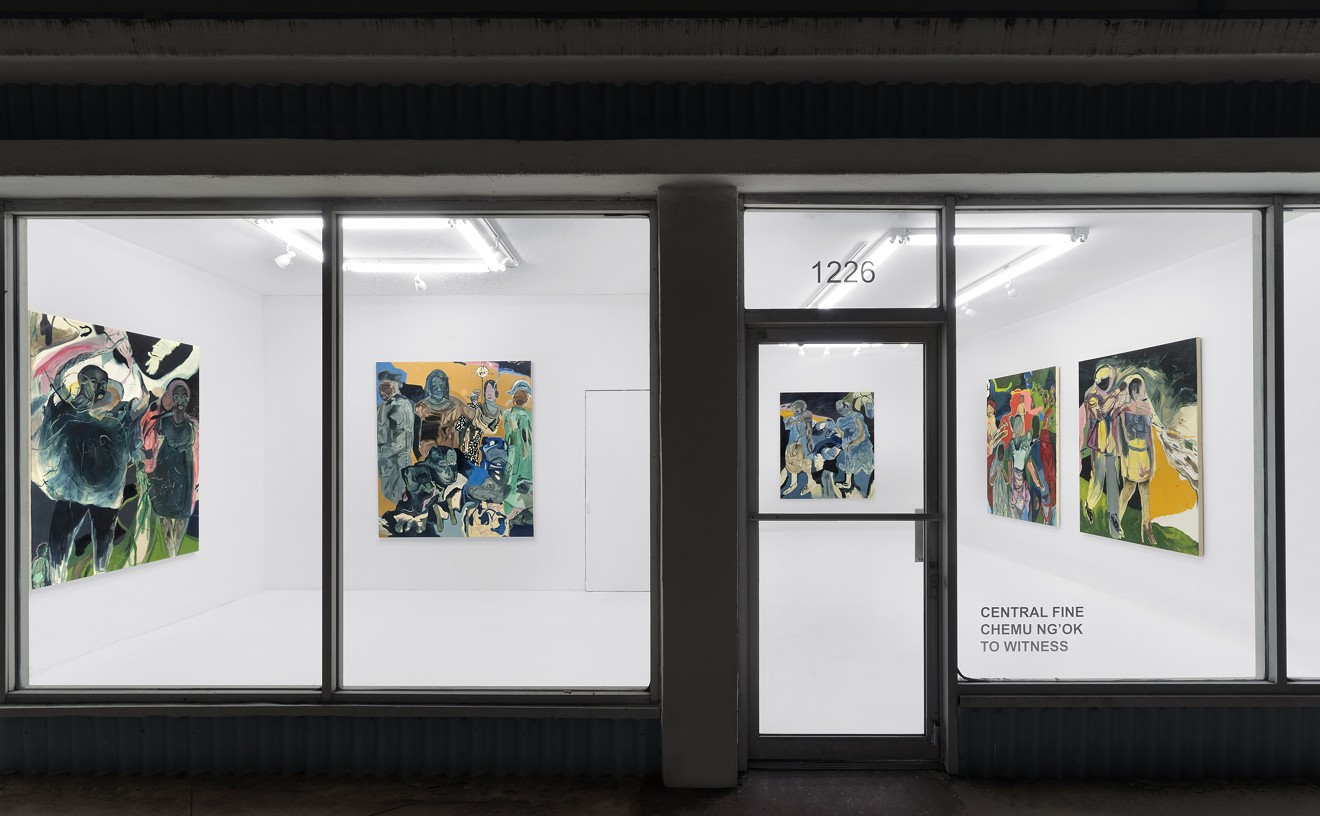In some cases, the art reflects themes of aging, memory, and the mortality of loved ones. This cathartic exercise, or epic exorcism, generally consists of documenting instances of the end of the life of a loved one. Examples abound: the visual poetics of Cuban-American artist Félix Gónzalez-Torres, closely linked to the death of his partner Ross Laycock, who died of complications from AIDS in 1991 — five years before the artist's own death.
And consider photographer David Wojnarowicz's images of the artist Peter Hujar, his friend and former lover, at the moment of his death also from AIDS-related causes in 1987.
Especially touching is the work of French artist Sophie Calle, whose almost Brechtian installation entitled "Rachel Monique" consists of a camera continuously recording her mother while she lay dying.
It is that precise line of thought in "The patience of ordinary things," a multispatial installation by Miami-based artist Kerry Phillips, on view through Saturday, August 3, in the main gallery of Locust Projects' new space in Little River.
Brimming with controlled emotions, Phillips' piece subtly delves into the complexity of experiences surrounding the act of aging: memory loss, the passage of time, and human connection through objects, photographs, and videos of her familiar reality.
In the first stage of her installation, the artist alludes to her father through a central element (her progenitor's antique automobile), inescapable and immobile, intended to provoke an emotional response through the viewer's physical interaction.
Highlighting the physicality and decay of the object, Phillips also reflects on her own life. Hers is an archeology of childhood that references objects from her youth, re-manifested in the present to underscore the depth of her loss and, in turn, her family legacy. Surrounding the car, a video in motion is projected on the walls, displaying abstract landscapes in ink, intervened in vignettes by the artist. The white planes on which the images are projected are reminiscent of the wooden planks commonly found on the exteriors of barns in the American countryside.
"This is my dad's car; it comes from the house I grew up in. I don't remember riding in it, but it's been there all my childhood. We played in it; it was always in the way," says Phillips during an interview inside Locust Projects as she walked among the work. "I've been trying to decipher the sense of time, how my mom and dad have changed, how all of us change when we get older as if the perception of time is now so different from my perception of time."
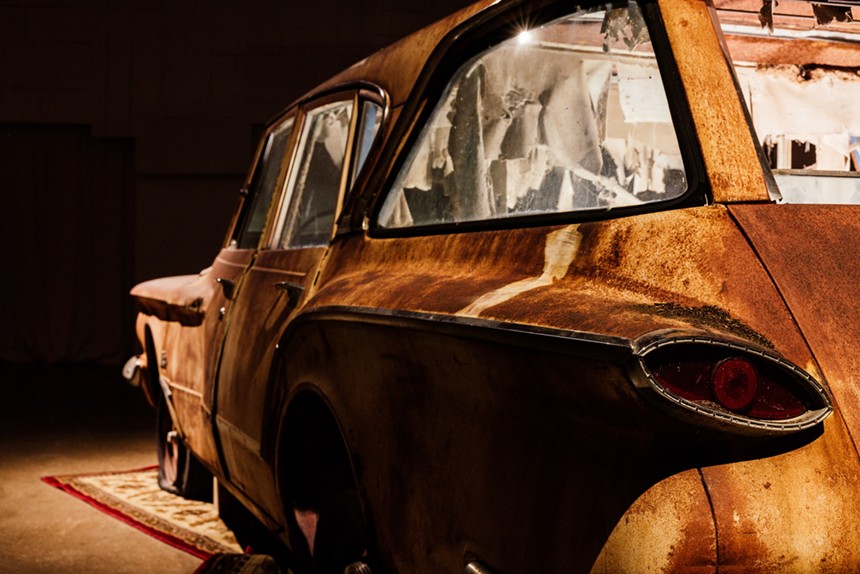
In the first stage of Kerry Phillips' installation, the artist alludes to her father through a central element — her progenitor's antique automobile — inescapable and immobile.
Photo by Pedro Wazzan
Phillips' observations are narrated through a sequence of images of the simple, repetitive routines that make up the new existence of her mother, once a creative and energetic woman full of nuances. The artist deliberately chooses an "imperfect" vehicle to document these instances, and the projections follow one after the other in random chains of movements.
"I am not an expert videographer, but I was noticing these things that my mom was doing repetitions, like little rituals, and it was very repetitive and a little obsessive. She was very focused, but why? It didn't make sense to me or my sister or anyone else, but it made sense to her, and just because I might not understand it doesn't mean that it's wrong."
She says she was watching her mother's actions and realized that she had to document them.
"It wasn't about her or her face but what was happening: her hands, the napkin, and the bowl that she kept moving. Her actions reminded me of how I make art. I take objects, and I move them around, and I keep going until it feels right. These aren't about being great videos; they're moments, snapshots, in and out of focus, very much like memory and how we shift and change," says the artist.
Beyond its visual and interactive elements, the exhibition meditates on modernity's discourses on aging and mortality. Archiving mundane everyday routines offers a deeply intimate perspective on memory, and it unveils certain shifting dynamics of family and self-awareness. It offers a positive angle to the questions of death and remembrance, even though, in our culture, these tend to be taboo (and decidedly heavy) topics.
"When my mom was first getting really lost with memory, I was incredibly sad — I couldn't even get off the phone with her without crying. But it felt different than just being sad and that she was different. I realized that I was mourning a life that wasn't even reality. I figured out that I could go back to just enjoying who she is now. She's really funny, just a goofy lady, and it's really fun to be around her even though she's not the same as she was," says Phillips.
Phillips asserts that her ability to construct this piece — using random materials to support her family storytelling — has specifically to do with her father's creativity.
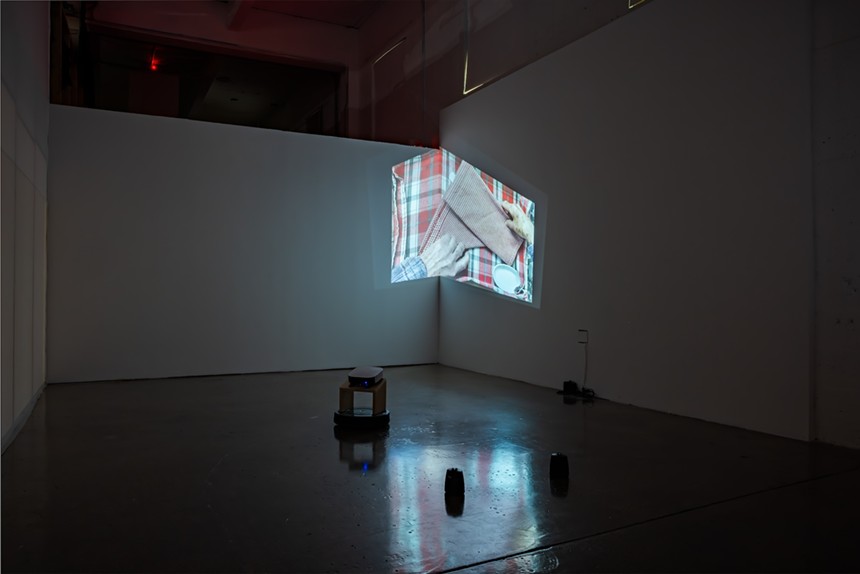
Surrounding the car, a moving video is projected on the walls, displaying abstract landscapes in ink, intervened in vignettes by the artist.
Photo by Pedro Wazzan
"My dad never threw anything away; anything can get fixed or reused. He and my mom both grew up on farms during the Depression years (when) you didn't have the luxury of going out and getting something; you had to make do with what you had," she says.
Perhaps an inevitable course based on her creative and inventive parents, Phillips earned an MFA from the University of Arizona. She has participated in numerous solo and group exhibitions at institutions such as the Orlando Museum of Art, the Pérez Art Museum Miami, the Museum of Contemporary Art North Miami, the Boca Raton Museum of Art, and Bridge Red Projects.
"It's so natural to use what I have on hand. My dad is a great problem solver; I got that from him — having a problem to solve and then knowing that there was a tool or something that we had on hand (usually from the backyard) to fix it," she says.
For the project's curator, Lorie Mertes, Phillips' piece is perfectly in tune with Locust Projects' purposes as an institution. "My role as curator is to support the artists at Locust in making decisions and to understand the context in which they are working. And I bring my experience and feedback to ensure that the artist takes the opportunity to experiment, take their practice in new directions, and do things that they haven't been able to do before in other places that don't focus on site-specific experimentation," says Mertes.
Mertes says that Phillips' proposal was selected from more than 150 others in Locust Projects' 2022 annual open call for the Main Gallery.
"Hers was chosen for (the way it shows) risks and experiment, as well as for its timely relevance and innovative approach to contemporary art," explains Mertes.
For the artist, this installation is more than "an artistic proposal." Rather, it is an overtly intimate act of tenderness and an invocation of her eagerness to preserve her family's history. And all roads lead to her past.
"In my last exhibition at the Bass Museum, I worked with the old carpet from my childhood bedroom," says Phillips. "This time, when I began to reflect on the process my mother was going through, the first thing that came to mind was how my grandmother had been a wonderful mom to her — and how my mother had been (the same) to me. I haven't married or had children, so that model of life for me exists only in documentation, in preservation, and in the telling of this story."
– Miguel Sirgado, ArtburstMiami.com
Kerry Phillips' "The patience of ordinary things." On view through Saturday, August 3, at Locust Projects, 297 NE 67th St., Miami; 305-576-8570; locustprojects.org. Wednesday through Saturday 11 a.m. to 5 p.m.

